Every ball python has its own unique look – just like our fingerprints, they’re one-of-a-kind! But some ball pythons go beyond those subtle differences, with unusual colors and patterns you won’t usually see in the wild.
These special looks and genetically heritable color patterns are called “morphs”, and they can even get passed down to baby snakes.
We’ll talk about the most common to most popular morphs below. Let’s go!
List of the Most Common Ball Python Morphs
- Albino (Amelanistic)
- Caramel Albino
- Piebald
- Axanthic
- Pastel
- Spider
- Champagne
- Cinnamon
- Fire
- Mojave
- Ghost
- Yellow Belly
- Lesser Platinum / Butter
- Pinstripe
- Clown
- Scaleless
- Banana / Coral Glow
- Black Pastel
- Enchi Ball Python
- Acid Ball Python
- GHI Ball Python
- Dreamsicle Ball Python
- Sunset
- Monsoon
- Paradox Ball Pythons
It’s important to understand that there are often different versions of the same morphs in the market.
For example, axanthic ball pythons – there are multiple types, each caused by a different recessive gene. These different lines don’t mix, so if you’re thinking of breeding axanthics, you have to make sure your breeding pair comes from the same (or at least a compatible) line, otherwise you won’t get the expected results.
On the other hand, some morphs play well together because they have codominant genes. Mojaves, lesser platinums, butters, and Russo-line leucistics all have compatible genetics. That means you could breed a Mojave to a lesser platinum and potentially get a stunning leucistic snake!
Now, want to see some examples? Let’s explore!
Albino (Amelanistic)
One of the first morphs to be established, the “albino” ball python (which is better described as being amelanistic) remains one of the most eye-catching morphs available. Albino ball pythons are unable to produce melanin – the brown to black pigment which makes typical ball pythons dark looking. The result is a yellow and white serpent with bright red eyes.
The amelanistic gene is passed on in simple recessive fashion, meaning that both parents must have at least one copy of the gene to produce amelanistic offspring.
Caramel (Tyrosinase Positive) Albino
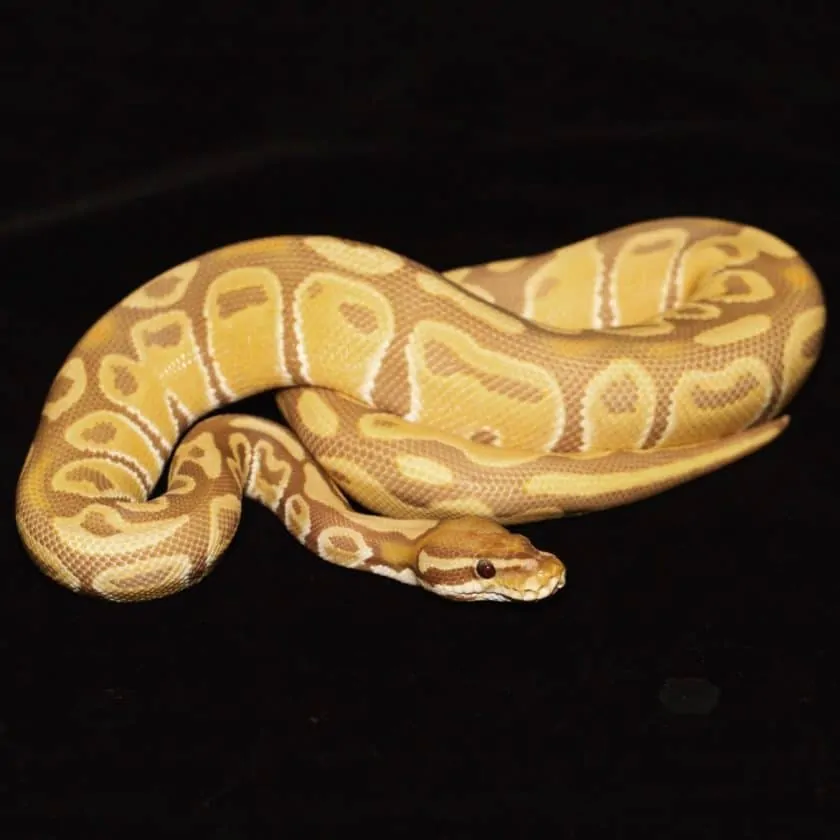
The caramel ball python is a lavender, yellow, brown and cream snake with deep red eyes. The caramel morph is caused by a gene that causes amelanism, but unlike typical albinos, these snakes still produce tyrosinase – an enzyme involved in the production of melanin. Accordingly, they look quite a bit different than “normal” albinos.
The caramel gene is passed on in simple recessive fashion.
Piebald
Piebald ball pythons are some of the most jaw-dropping animals in the entire reptile-keeping hobby. A simple recessive trait, the piebald gene causes snakes to exhibit large areas of normal pattern and coloration, which is broken up by large swaths of pure white skin.
Different individuals exhibit varying amounts of white coloration. Many of the most desirable individuals are largely white, with small, scattered areas of normal color and pattern.
Axanthic
Axanthic ball pythons don’t have xanthophores – the cells that produce yellow pigments. Accordingly, axanthic ball pythons have a pseudo-black-and-white appearance. While attractive in its own right, the axanthic gene is often used in conjunction with other morphs, to produce truly mind-blowing animals.
The axanthic morph is passed on in a simple recessive manner.
Pastel
The pastel gene is either considered co-dominant or incompletely dominant, depending on the authority consulted. In either case, animals only need one copy of the gene to exhibit the trait, which gives the animals a somewhat hypomelanistic (reduced melanin) appearance. Pastel ball pythons are much brighter in color than typical ball pythons, and their reduced melanin can cause their pattern to look slightly different too.
Snakes that possess two copies of the pastel gene are typically called “super pastels,” and they are much brighter or lighter in color than typical pastels. The pastel gene is frequently combined with other genes to make designer snakes.
Spider
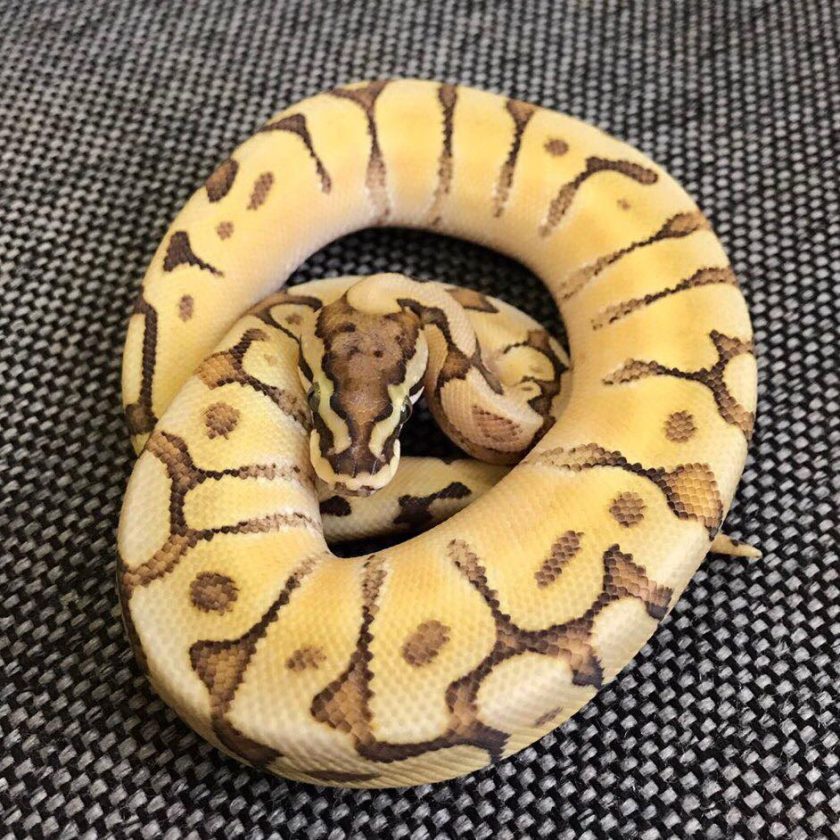
The spider morph is an interesting ball python mutation. Spider ball pythons often have slightly brighter colors than typical ball pythons, and they have reduced patterns, which contain larger brown or yellow patches and relatively thin black pattern elements. They also exhibit white speckling around their lateral-ventral borders.
The spider morph is inherited in some type of dominant fashion; animals only require one copy of the mutated gene to exhibit an altered appearance. However, no “super” form has ever been produced. Some breeders suspect that two copies of the gene prove fatal, while others simply think there is no “super” form (making it a dominant trait).
Spider ball pythons are used alongside several other mutations to create a number of designer snakes, such as the bumblebee spider (which is a combination of the pastel gene and the spider gene). However, it is important to note that the majority of snakes with the spider gene exhibit neurological issues, often known as the “spider wobble.”
Champagne
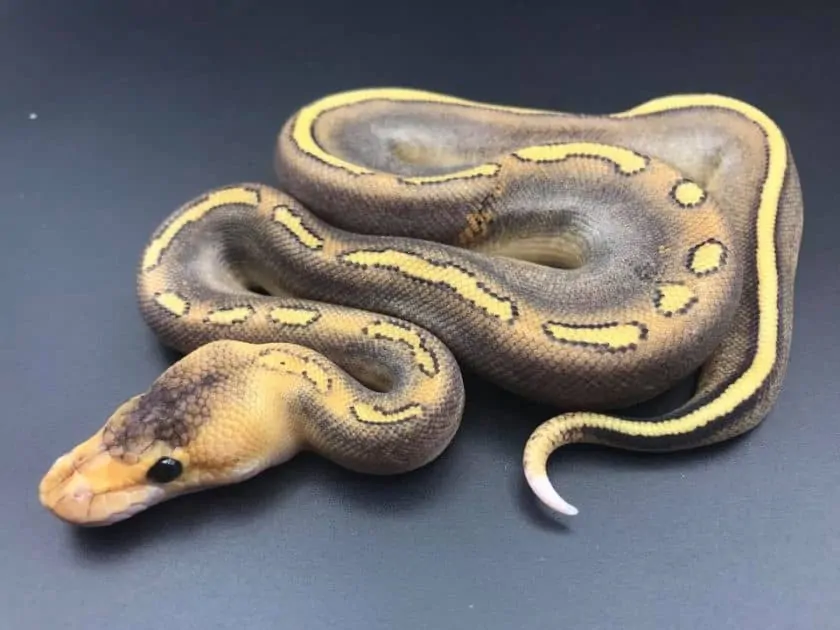
Champagne ball pythons are quite striking looking, as they have extremely reduced patterns. In fact, aside from a subtle stripe down the back, champagnes don’t exhibit much else in the way of pattern.
The champagne ball python (which is also called the pastel champagne) is a co-dominant/incomplete dominant morph, but the super form of the mutation is thought to be lethal. It is often crossed with other co-dominant mutations to create designer snakes.
Cinnamon
The cinnamon ball python mutation is another example of a co-dominant/incomplete dominant mutation.
Simple cinnamon ball pythons are a bit underwhelming to look at, as they essentially look like relatively dark (if contrasting) ball pythons. However, super cinnamon ball pythons are spectacular. Nearly patternless and clad in a rich dark brown color, super cinnamon ball pythons always catch eyes and drop jaws.
Fire
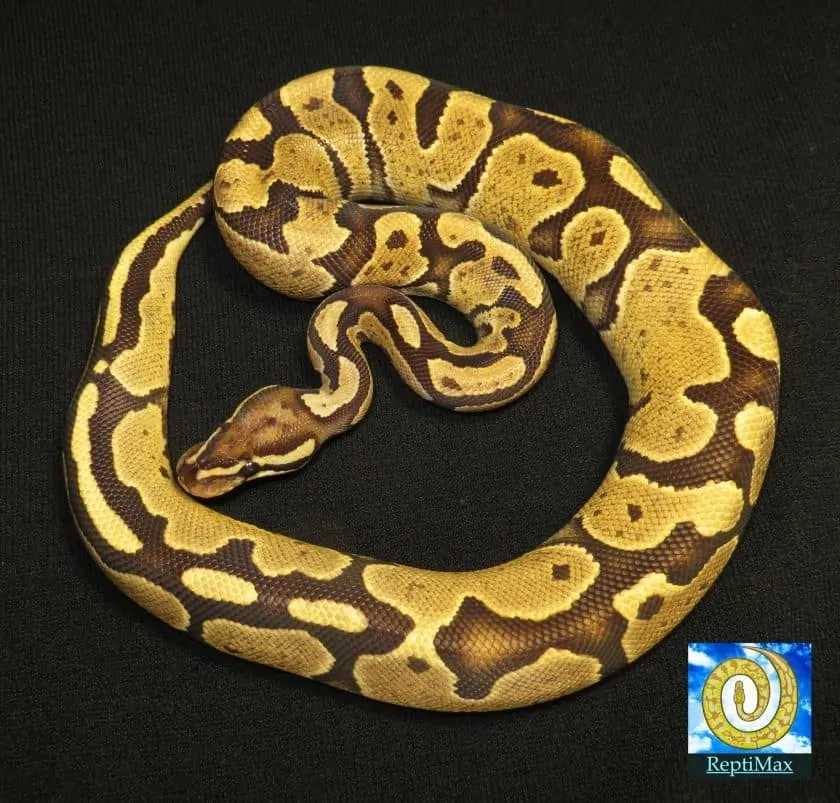
The fire morph is a co-dominant/incomplete dominant trait. Fire (or fireball) ball pythons who have only one copy of the gene are relatively normal-looking snakes, although their golden tones are especially satiny and their dark pattern elements feature warm, rich hues.
But the real appeal of fire ball pythons is largely thanks to the super form of the morph. Individuals with two copies of the gene appear almost completely white (leucistic) and bear black eyes.
Mojave
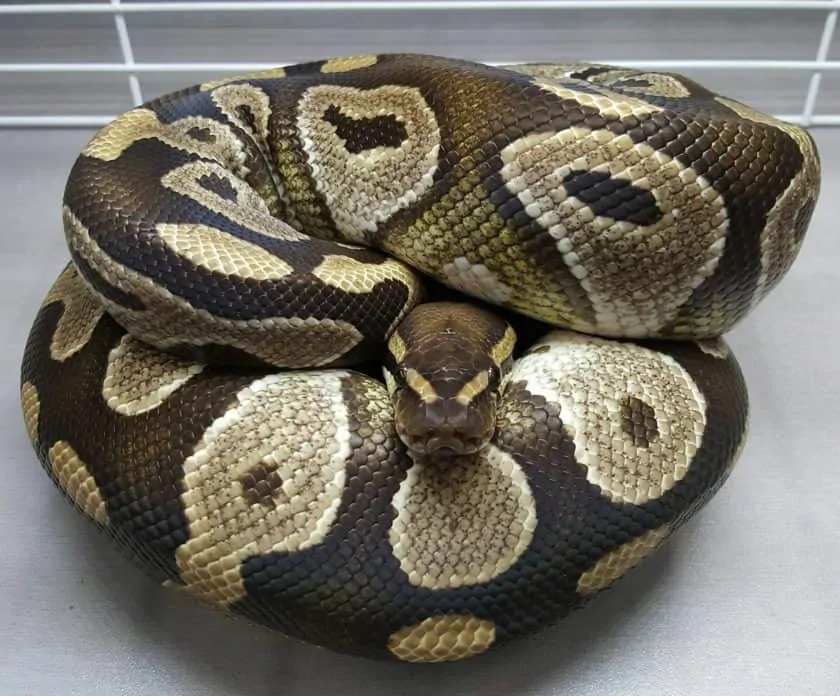
Mojave ball pythons exhibit different colors and a unique pattern, which differs from that of normal ball pythons. They often display strongly contrasting black and gold markings, and the “alien heads” that are typically present on the sides of normal ball pythons are often split into separate markings. Mojaves also have completely white, patternless bellies.
The Mojave morph is a co-dominant/incomplete dominant mutation. Animals with a single copy of the gene display the Mojave aesthetic, but those with two copies of the gene appear as completely white animals with blue eyes.
Ghost
The ghost ball python morph is an example of hypomelanism. Unlike amelanistic (albino) animals, who produce no melanin, ghosts simply produce less melanin than usual. A simple recessive trait, the ghost morph only appears in animals that have two copies of the gene.
Ghost ball pythons vary significantly in appearance, but most look “hazy” with muted colors. In fact, they’re often described as looking like they’re always in a shed cycle.
Yellow Belly
The yellow belly morph is a co-dominant/incomplete dominant mutation, which causes ball pythons to exhibit some very subtle differences in color and pattern. They typically have unmarked bellies (which may or may not have a yellow wash), and their light-colored pattern elements often have washes of red or yellow.
However, the super form of the yellow belly ball python is quite striking. Called the ivory ball python, these relatively patternless snakes are peach-colored and possess dark black eyes.
Lesser Platinum / Butter
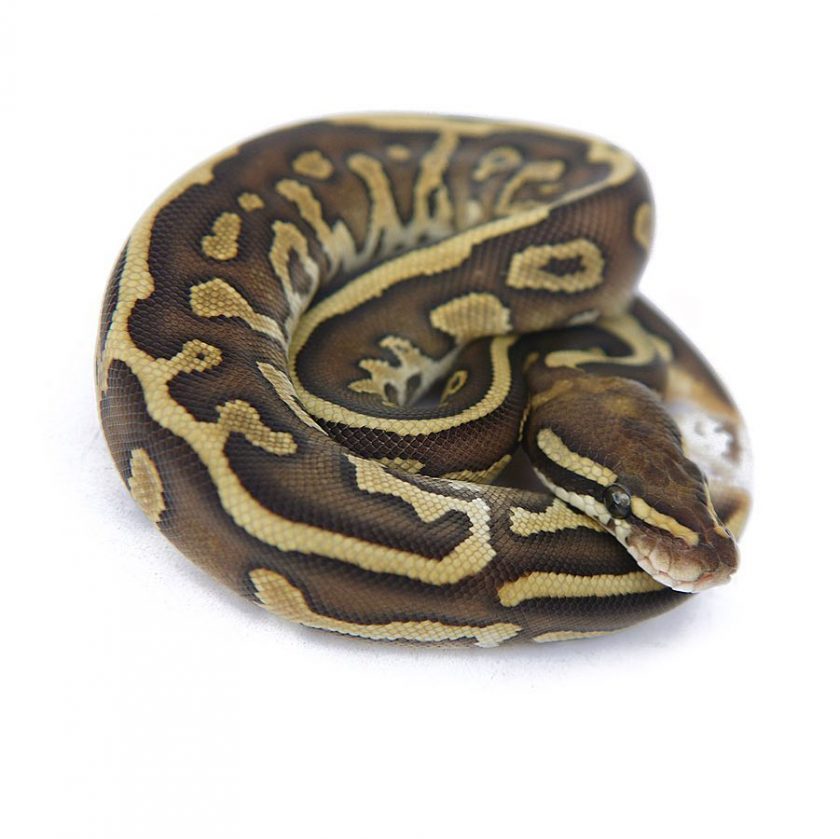
The butter morph and the lesser platinum morph are both very similar-looking mutations, but they appear to be different traits. Nevertheless, they’re both compatible and produce blue-eyed leucistic animals when bred together (in any combination).
Essentially, snakes with one copy of either gene look like high contrast, very brightly colored ball pythons. This is an co-dominant/incomplete dominant mutation.
Pinstripe
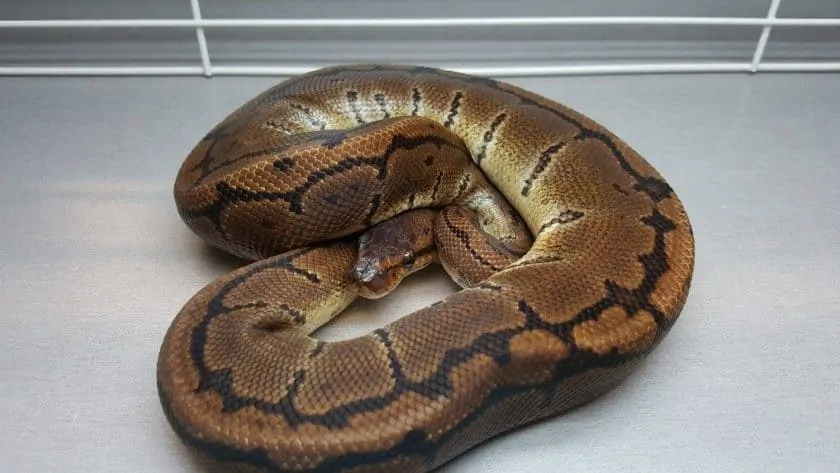
Pinstripe ball pythons are a very eye-catching morph. They exhibit relatively typical coloration, but they have very reduced dark pattern elements, which creates the overall impression of a yellow or straw-colored snake, with thin, dark lines and markings.
Pinstripe is an example of a dominant mutation. This means that animals possessing two copies of the mutated gene look identical to those who only have one copy.
Clown
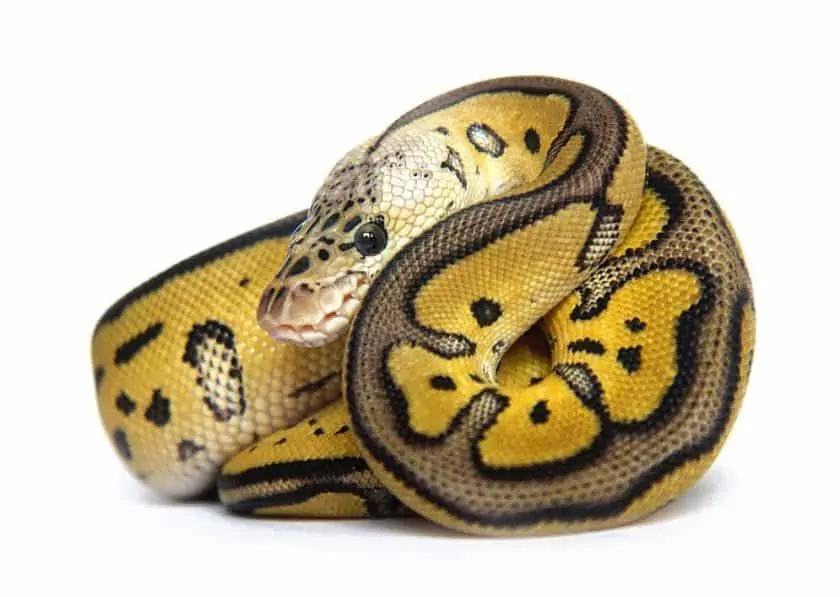
The clown morph is a simple-recessive mutation that causes changes in the typical color and pattern of ball pythons. Clown ball pythons vary in appearance quite a bit. The best examples of the morph bear very bright, crisp, high-contrast coloration and an extremely reduced, atypical pattern. Most clown ball pythons also have relatively pattern-free heads.
On the other hand, some individuals appear similar to normal ball pythons, with slightly warmer coloration and subtle differences in pattern.
Scaleless
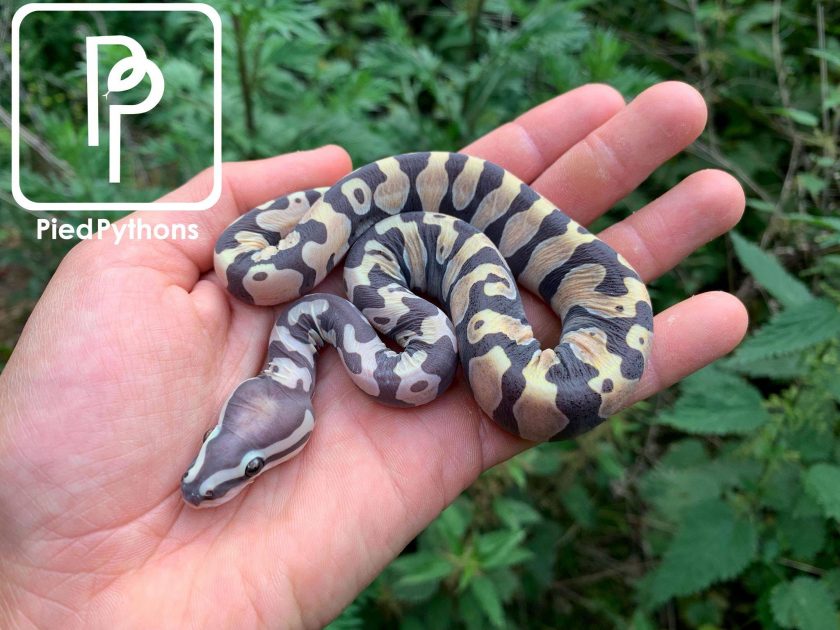
The scaleless ball python morph is relatively new, and as such, there’s a lot about it we don’t yet understand. A few scaleless ball pythons have been produced, but several have exhibited troubling health problems.
Some scaleless ball pythons are almost entirely free of scales, while others have a reduced number of scales. Some have scales on the bulk of their bodies, while not possessing any on the head. They typically exhibit normal coloration and pattern elements.
Banana / Coral Glow
The coral glow and banana ball python morphs are not entirely understood at the moment. It isn’t even clear whether or not they are the same mutation or if they’re different, but compatible, mutations. The mutation also appears to be sex-linked, further complicating matters.
Regardless of the way the mutation is inherited, the result is the same: a stunning, high-contrast, yellow, orange and lavender snake. Many develop small black dots along their bodies as they age.
Black Pastel
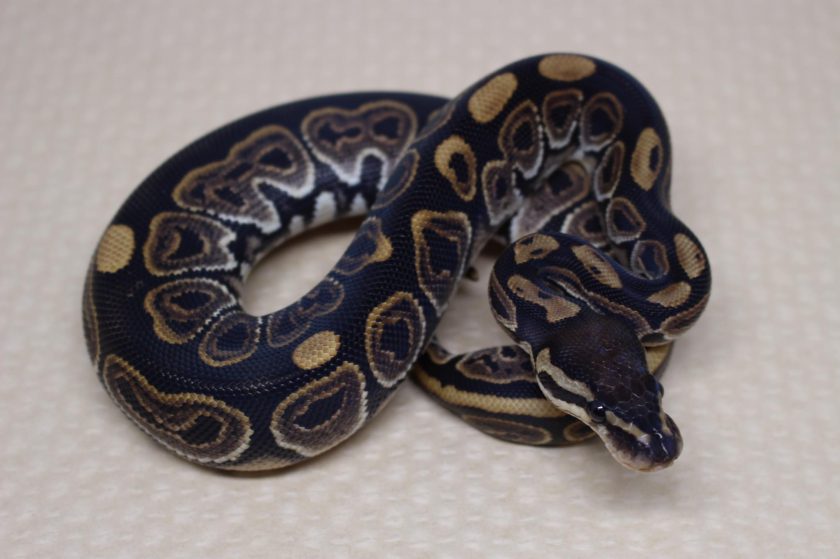
The black pastel mutation doesn’t look particularly impressive – most black pastel snakes look like slightly darker normal ball pythons, but with pretty sharp contrast between the black and brown pattern elements. They actually look pretty similar to cinnamon ball pythons, although they’re two completely different mutations.
The mutation is co-dominant/incomplete dominant, and the super form appears as a very dark animal with a patternless, white belly.
Enchi Ball Python
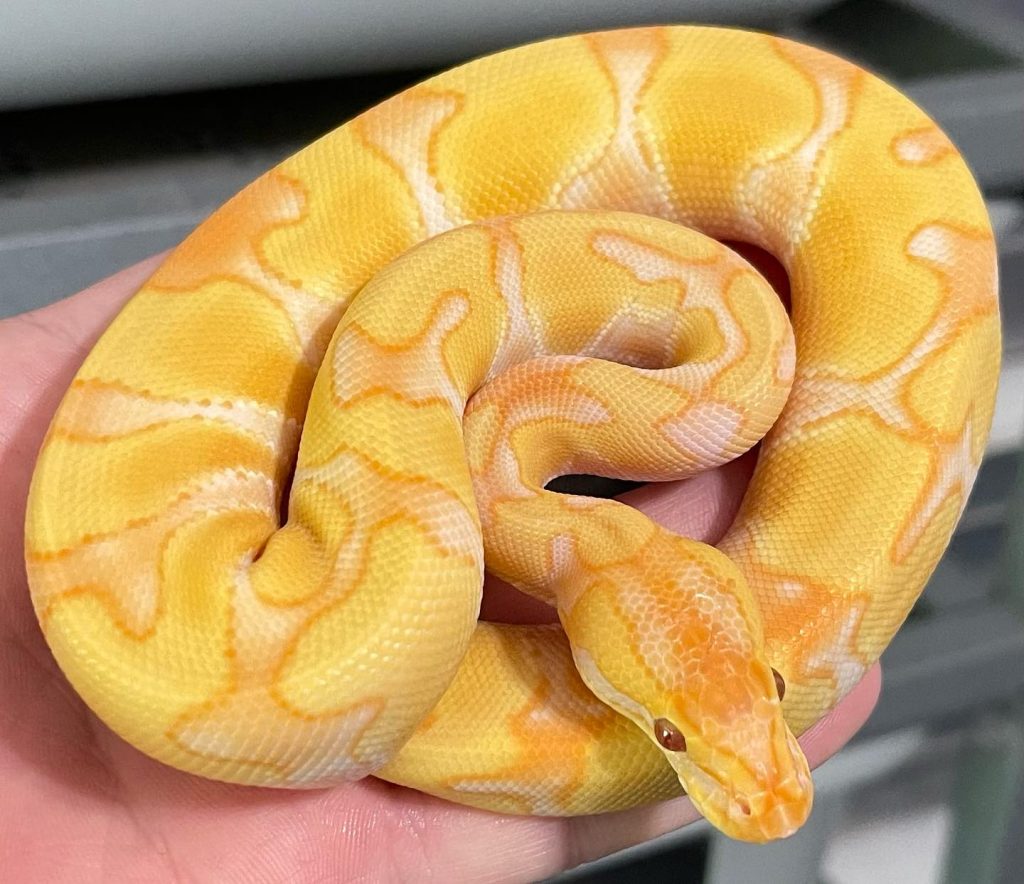
The Enchi ball python morph is a subtly beautiful variation that truly shines when combined with other morphs. It’s a co-dominant mutation, meaning you only need one parent with the Enchi gene to produce Enchi offspring. However, breeding two Enchis together produces Super Enchis.
Enchi ball pythons resemble normal ball pythons, with a dark brown or black base color that lightens to a chocolatey shade on the sides. Their patterns are brighter, typically consisting of yellow, golden, or bronze with occasional white markings. Super Enchis take this a step further – they’re even brighter, with minimal dark patterning.
Acid Ball Python
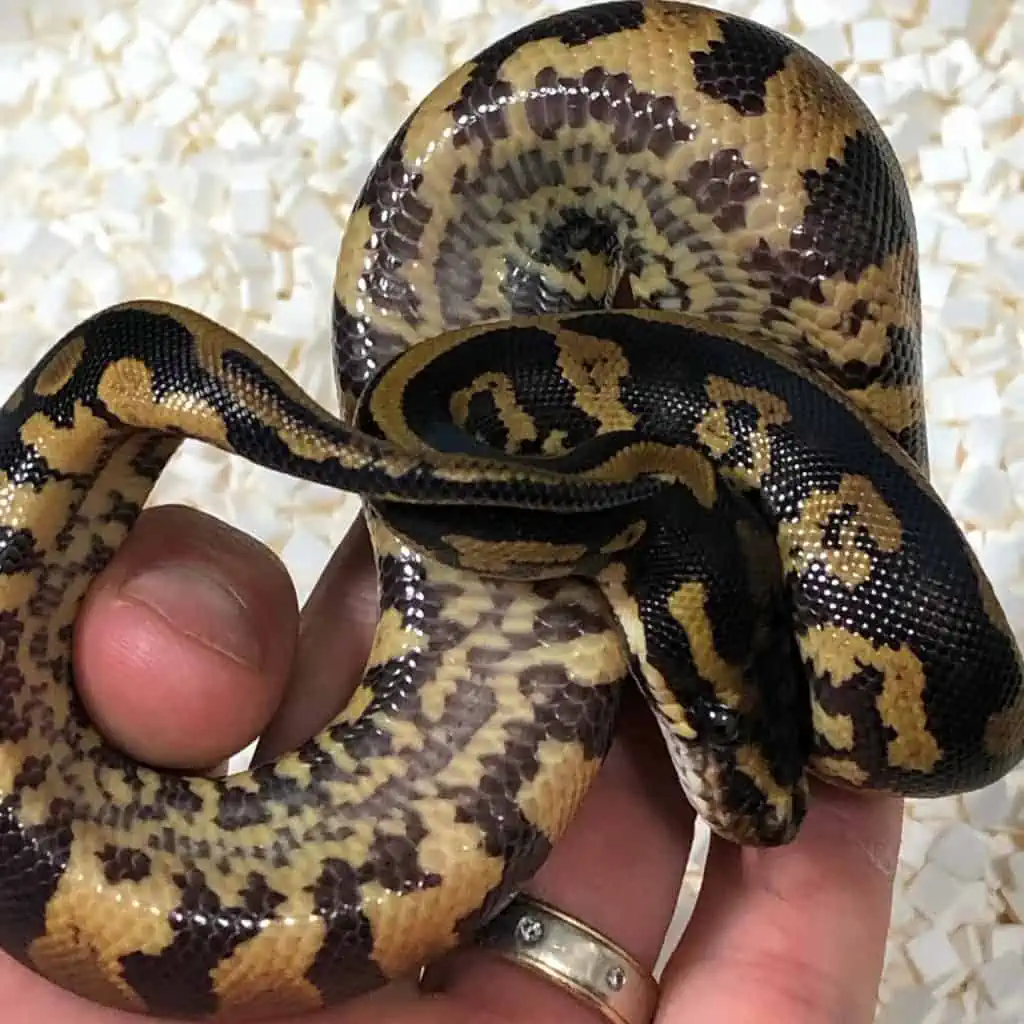
The Acid Ball Python is a dominant morph that dramatically alters a snake’s pattern and coloration. They display a unique headstamp, often resembling a clover shape. Their bodies feature irregular, connected blotches unlike the typical ball python pattern. These blotches can contain “bubbles” of black coloration, similar to the Leopard morph. Acid ball pythons often have a distinct “zipper” pattern of black along their bellies and an overall blue-black sheen—this helps distinguish them from Leopards.
Acid ball pythons are known to have no genetic health issues. They are a popular choice for breeders, as they combine exceptionally well with other morphs. For intensely disrupted patterns, consider Acid combinations with Pinstripe, Spotnose, and Pastel. To create darker snakes, breed Acid with Mojave, Blackhead, Leopard, GHI, or Cinnamon.
GHI Ball Python
The GHI Ball Python is a fascinating example of newer morph discoveries. Matt Lerer first identified it in 2007 after finding several unique individuals in imported shipments. These snakes are truly impressive! A GHI Ball Python features a significantly darker background than a classic wild-type ball python. This dark coloration contrasts beautifully with lighter patterns running along the snake’s length, similar to a wild-type’s pattern.
The GHI Ball Python carries a co-dominant morph. This means you only need a single GHI present to start seeing the morph’s effects in offspring. However, things get exciting when you breed two GHIs together, as this combination can produce Super GHIs.
These snakes boast an intensely deep, almost jet-black background color, and their lighter patterns are also notably darker. GHI Ball Pythons have become a true favorite among collectors, especially for their potential in creating amazing designer snake combinations.
Dreamsicle Ball Python
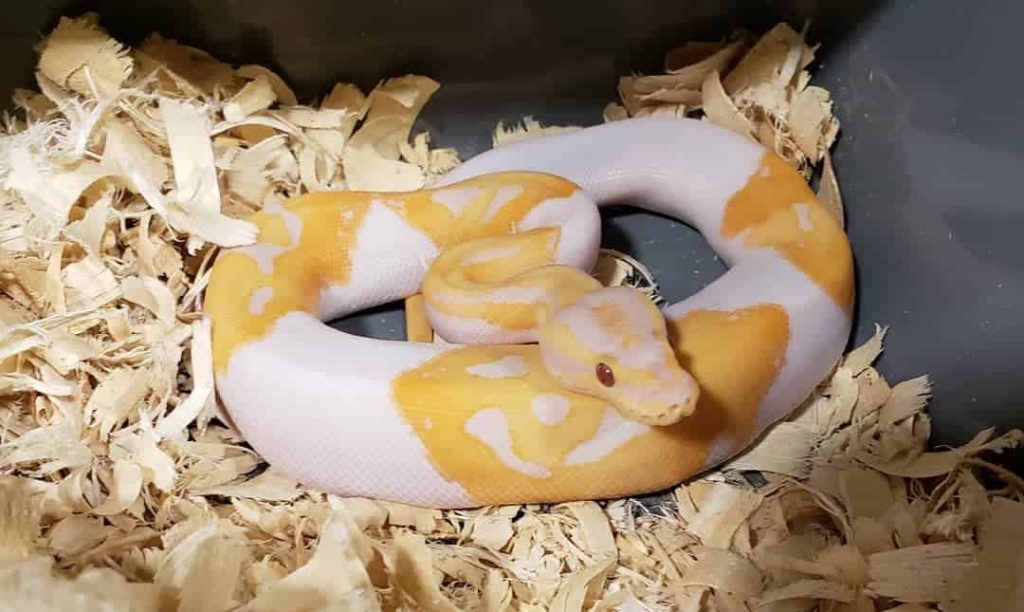
The Dreamsicle Ball Python morph is a breathtaking combination of radiant yellow and crisp white. Developed in 2007 by Ralph Davis Reptiles, this morph carries the distinctive markings of both the lavender albino and piebald genes. Its striking looks and friendly demeanor make the Dreamsicle a desirable choice for both experienced breeders and enthusiastic beginners.
Dreamsicles are known for their vibrant, golden-yellow pattern accented by pure white patches. The lavender albino gene gives them pale lavender tones and deep red eyes, adding a unique touch compared to typical albinos. These beautiful morphs are often combined with other genes to create even more astonishing designer snakes.
Sunset
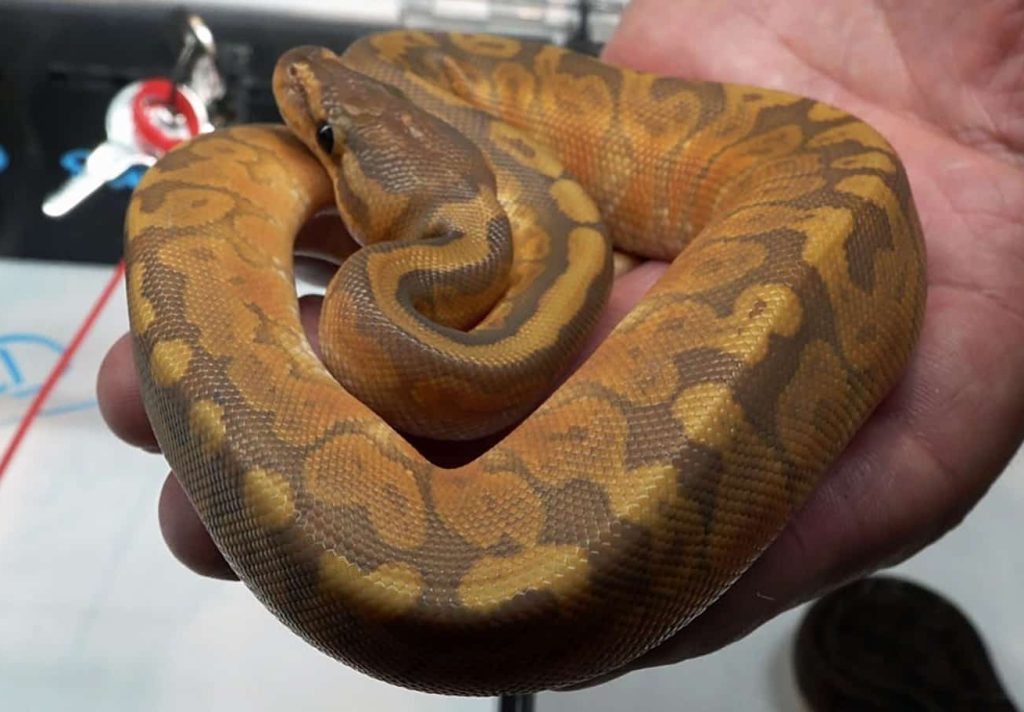
The Sunset Ball Python is a really special and rare kind of snake – they don’t look like other ball pythons. They were first created by BHB Reptiles in 2012. This special color pattern happens because of a gene they carry, and it makes them really valuable to snake collectors.
A few years ago, Brian Barczyk, who works with snakes, heard about an unusual snake from Africa. The pictures showed a snake with a crazy burnt orange color that no one had ever seen before. It took a lot of time and money, but Brian was able to breed snakes that made a Sunset baby in 2012. This showed that the Sunset color comes from a special gene!
Their head is a dark brown color, kind of like chocolate. On their body, they have awesome burnt orange that’s brighter on the sides and darker on their back. They also have really cool stripes that look bubbly and kind of like flames. Their tail is orange too, and it usually has a jagged stripe down the middle.
Sunset Ball Pythons are awesome with their red, orange, and yellow colors – they really do look like a sunset! People like to combine the Sunset with other snake patterns, and those snakes can be super valuable.
Monsoon
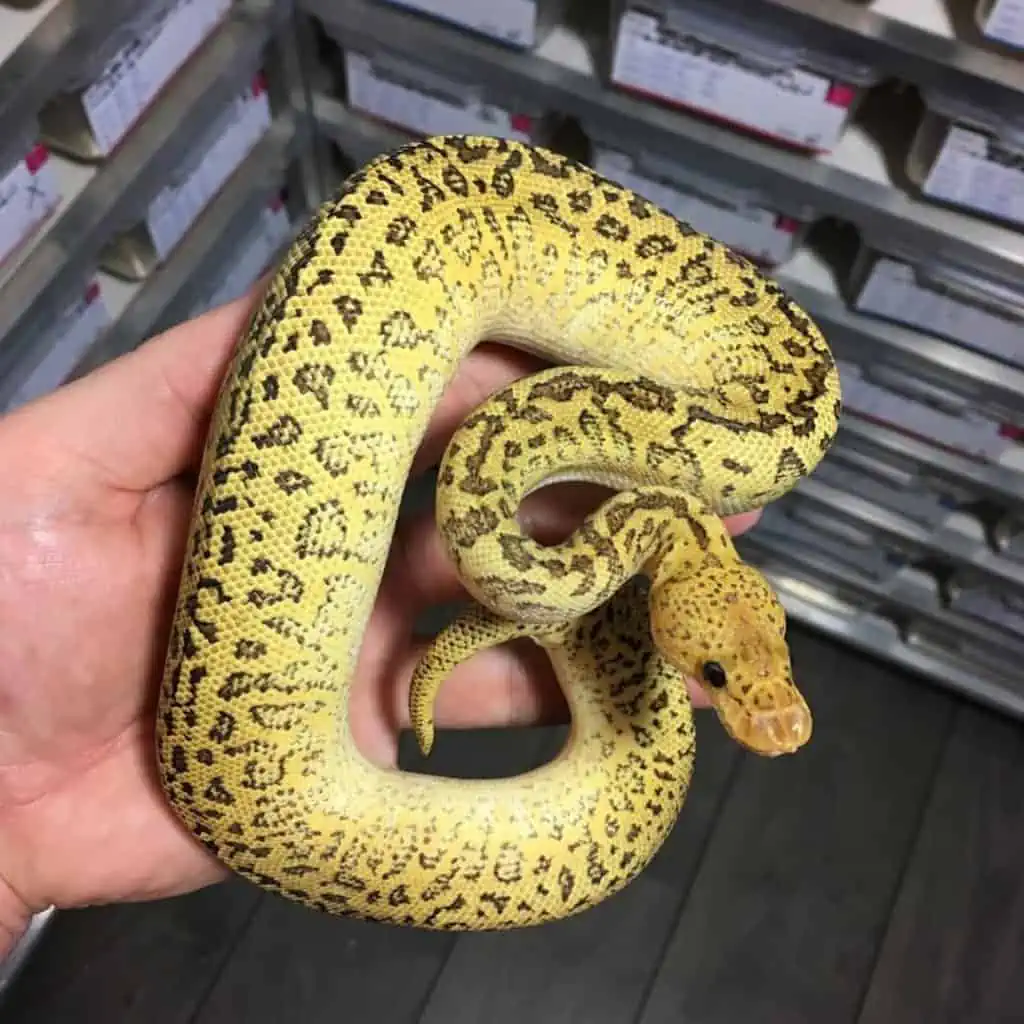
Ball pythons come in all sorts of interesting patterns and colors – the Monsoon morph is one of them. It’s pretty new, first showing up in 2013 thanks to a breeder named Dave Green. It took him a while, but he finally proved it was a whole new type of pattern. He still breeds Monsoon ball pythons today.
The Monsoon morph is all about the pattern. They have tons of little speckles all over their body that look like raindrops. That’s where they get their name! Normal Monsoon ball pythons have tan speckles on a brown background, but they can be other colors too depending on what other genes they have.
These snakes are still pretty rare, so they can be expensive. You’ll likely need to have one shipped to you since not many breeders have them.
Paradox Ball Pythons
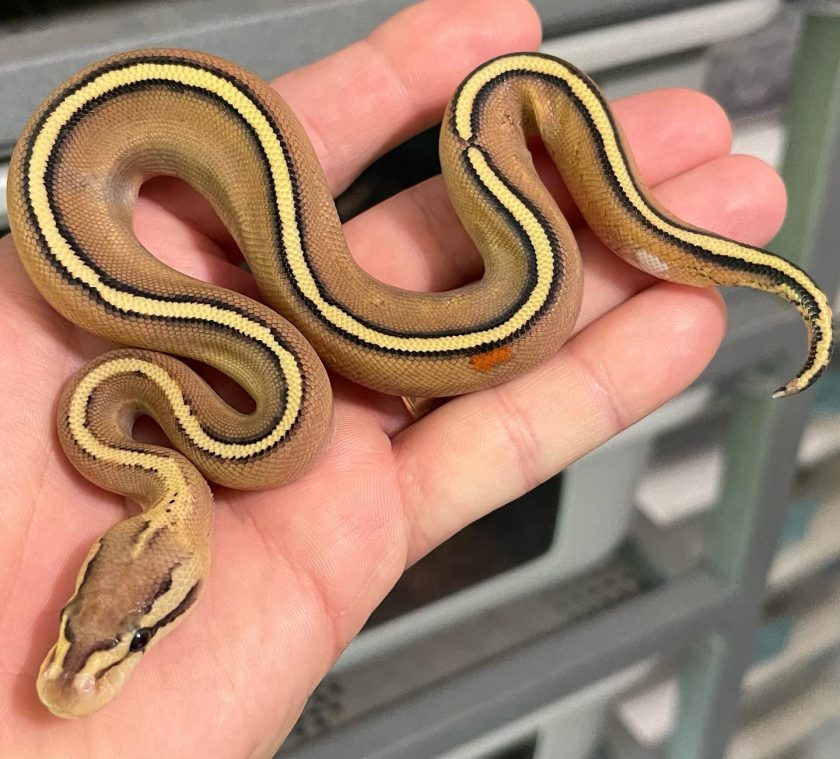
Paradox ball pythons are snakes with a mix of patterns from two different morphs. Imagine a banana ball python; it should be all yellow and black. But a paradox banana might also have patches of regular brown, like a normal ball python. It’s a mix-up that shouldn’t happen genetically!
Sometimes, it’s a blue-eyed leucistic, a morph that should be pure white. But a paradox version will have normal brown patches, too. It’s like the snake’s genes get confused in certain spots.
Paradox patterns are random accidents in the ball python’s DNA. It makes them super unique, but you can’t breed to get more. Some people think that morphs like Champagne are more likely to produce paradoxes, but there’s not much proof of that.
Paradox is all about luck. No fancy breeding tricks, it’s pure chance when it happens. You just keep hatching eggs and hope for a surprise!
Combinations: When One Morph Isn’t Enough
The 25 mutations described above are all beautiful and interesting in their own right, but many hobbyists and breeders enjoy combining more than one mutation in the same snake. This doesn’t always yield anything particularly special, but some combinations produce results that are nothing short of breathtaking.
Often, the first breeder to combine two morphs will name the resulting combination. We’ve listed some of the most notable combinations and their names below.
- Bumblebee Ball Python – Pastel x Spider
- Killer Bee — Super Pastel x Spider
- Pewter Ball Python – Pastel x Cinnamon
- Lemon Blast Ball Python – Pastel x Pinstripe
- Panda Pied Ball Python – Super Black Pastel X Piebald
- Pastel Ivory Ball Python – Pastel x Ivory (Super Yellowbelly)
- Firefly Ball Python – Fire x Pastel
- Killer Clown Ball Python – Clown x Super Pastel
- Monsoon Ball Python – Super Pastel x Super Mojave
- Albino Pinstripe – Albino x Pinstripe
Of course, there are literally thousands of different ways ball python breeders could combine various traits, so a complete list of combinations is beyond the scope of this article. Just understand that there is virtually no end to the possibilities of ball python morph combinations!
What Are Ball Python Morphs?
When hobbyists use the term “morph” they are usually referring to a snake (or some other animal) that possesses a genetic mutation that alters its appearance.
In some cases, these differences relate to colors. Albino (amelanistic) ball pythons, for example, display white colors where normal ball pythons would display black colors. In other cases, the morph alters the pattern of the snake. Some morphs, for example, bear striped patterns. Still others display colors and patterns that differ from normal ball pythons.
However, it is important to note that while many snakes display unusual color patterns, only those that are capable of passing the mutation on to their offspring should be called morphs. Those that cannot be passed on to a snake’s offspring simply represent non-heritable anomalies. Such snakes can still be attractive and make excellent pets, but they won’t produce offspring that demonstrate the same color pattern.
Many morphs are really attractive. And because they’re usually rare, morphs usually fetch higher prices than normal-looking ball pythons do. In some cases, these price differences can be substantial – many particularly rare morphs bear five-digit price tags.
However, there are also morphs that don’t look substantially different from normal ball pythons. They may simply be a slightly different shade of brown or possess slightly unusual markings. Some are even less attractive than normal ones (although beauty is obviously in the eye of the beholder).
But the point remains: Ball pythons who exhibit unusual colors or patterns that are associated with a heritable gene mutation qualify as morphs.
Ball Python Genetics
Most morphs lack the cryptic color patterns of their normal-looking counterparts, so oddly colored snakes often stand out in the habitat. Hawks and other sharp-eyed predators – including humans – are usually capable of spotting them with ease.
Accordingly, humans have probably come across unusually colored ball pythons and other snakes for millennia.
But instead of keeping these unusual critters as pets, early humans probably ate them. But over time, people began eating fewer snakes (although they still appear on menus around the world) and keeping more of them as pets. Eventually, a few morphs found their way into the hands of snake breeders, and captive lines were established.
The first mutation to become established in the hobby was probably the albino (amelanistic) corn snake (Pantherophis guttatus) gene.
The original animal was caught in North Carolina and bred 6 years later by Dr. Bernard Bechtel. But, because the amelanistic gene is passed along in simple recessive fashion, it wasn’t until these initial offspring were bred back to the father to produce what were likely the first captive-bred albino snakes in 1961.
Other mutations would follow, and by the 1980s, albino (amelanistic) common boas (Boa constrictor) and Burmese pythons (Python bivittatus) started making their way into the hands of breeders.
By the late 1980s and early 1990s, ball python breeders were combing over shipments and looking out for unusual ball pythons. Several unusual genetic mutations were discovered during (and after) this time, but the first ball python morph to be produced in captivity was the albino (amelanistic) ball python line created by Bob Clark in 1992.
Since this time, dozens of other morphs have made their way into the hands of breeders (and some have spontaneously appeared in normal-looking lines). Modern ball python enthusiasts can choose from ball pythons clad in myriad colors and patterns.
Patterns of Inheritance
Different ball python morphs are passed on in different ways. It is important to understand these patterns of inheritance when shopping for your own ball python morph.
But first, you’ll need to learn three key terms:
- Allele – One of two or more versions of a gene located at the same place on a chromosome. For example, the albino (amelanistic) gene and the gene that produces melanin are alleles.
- Homozygous – Describes animals with two copies of the same allele. For example, animals that have two copies of the albino (amelanistic) gene are considered homozygous.
- Heterozygous – Describes animals that have two different alleles. Heterozygous animals may, for example, have one copy of the albino (amelanistic) gene and one copy that produces normal amounts of melanin.
With these definitions in mind, we can begin discussing the basic ways ball python mutations are passed on. Generally speaking, most morphs are inherited in one of four ways:
Simple Recessive
Simple recessive traits are only expressed when they occur in pairs. Albinism (amelanism), for example, is a simple recessive trait. This means that only those animals with both copies of the albino (amelanistic) gene will display the trait. Those with one or no copies of the albino (amelanistic) gene will look completely normal.
Dominant
Dominant traits are displayed whenever the gene in question is present. The pinstripe morph is an example of a dominant trait in ball pythons. Any animal that gets a single copy of the pinstripe trait will look like a pinstripe. Conversely, normal appearing animals cannot have these genes.
Incomplete Dominant / Co-Dominant
Technically, the terms incomplete dominant and co-dominant refer to different types of inheritance, but they are often used interchangeably in herpetological contexts. Regardless of what you call them, these types of traits are displayed when a single copy of the gene is present.
However, when two copies of the mutated gene are present, the animal exhibits a “super” appearance, which is generally a more extreme version of the typical, heterozygous form.
Polygenetic
Some traits, such as many of the striped appearances, are polygenetic, meaning that they are controlled by several different genes. These traits are more difficult to reproduce in a predictable fashion, so they’re rarely considered “morphs” by enthusiasts.
While you needn’t know the biological minutia involved in patterns of inheritance, it is important to understand the basics. If nothing else, the pattern of inheritance can help you understand the supply-and-demand principles that affect the price of different morphs.
For example, morphs passed on in incomplete dominant/co-dominant fashion often fall in price much more rapidly than those passed on in simple recessive fashion.
Do Morphs Cause Any Other Changes?
It is important to note that mutations affecting an animal’s color or pattern do not necessarily exist in a vacuum. And while most morphs seem to only affect the animal’s appearance, a few appear to trigger other effects too.
Some traits are also associated with behavioral changes. For example, some snakes that exhibit mutations adopt unusual postures or move in strange ways. Others may be tamer or more aggressive than their normally colored counterparts.
It’s not clear, in most cases, whether the gene responsible for the morph is the cause for these differences, or they are the result of other traits, that just so happen to occur in the same lines.
Conclusion
I haven’t personally worked with many ball python morphs, although I did maintain a small colony of pastel ball pythons years ago. However, I did work extensively with a few carpet python (Morelia spilota ssp.) morphs, and I dabbled with leopard gecko (Eublepharis macularius) morphs when I first became interested in reptiles.
So, I definitely understand the appeal they have. And while I often prefer normal-looking snakes to those clad in gaudy colors, I definitely think some of the mutations on the market are very attractive – the pinstripe and desert morphs are two of my favorites.
But some of the most attractive ball pythons, in my opinion, are those that feature two or more mutations. I think the caramel glow ball python, for example, is a glorious looking animal.
Tell us about your favorite ball python morphs in the comments below.wo of my favorites.
But some of the most attractive ball pythons, in my opinion, are those that feature two or more mutations. I think the caramel glow ball python, for example, is a glorious looking animal.
Tell us about your favorite ball python morphs in the comments below.

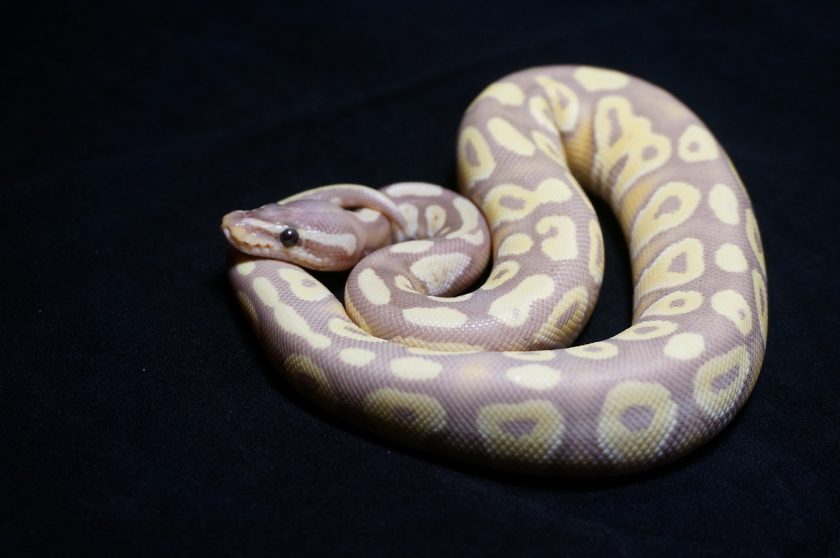
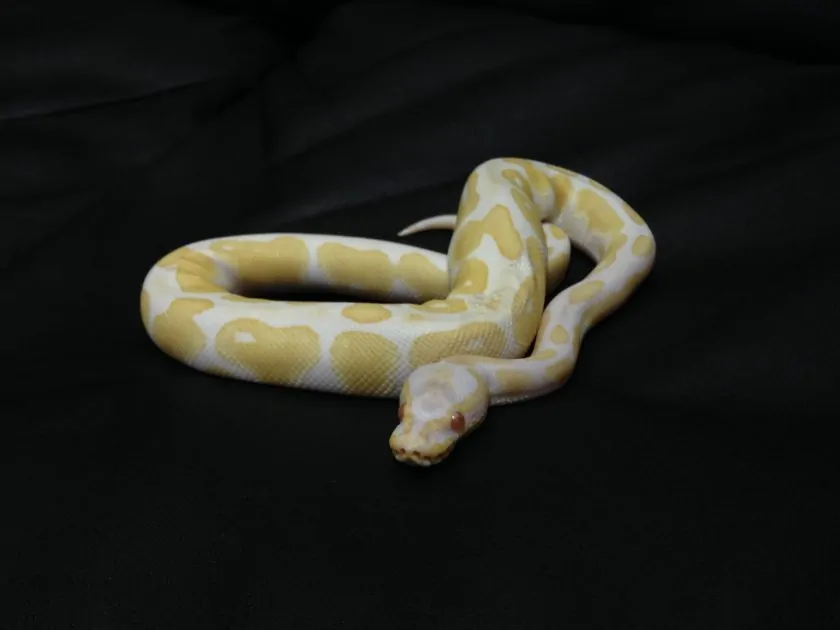
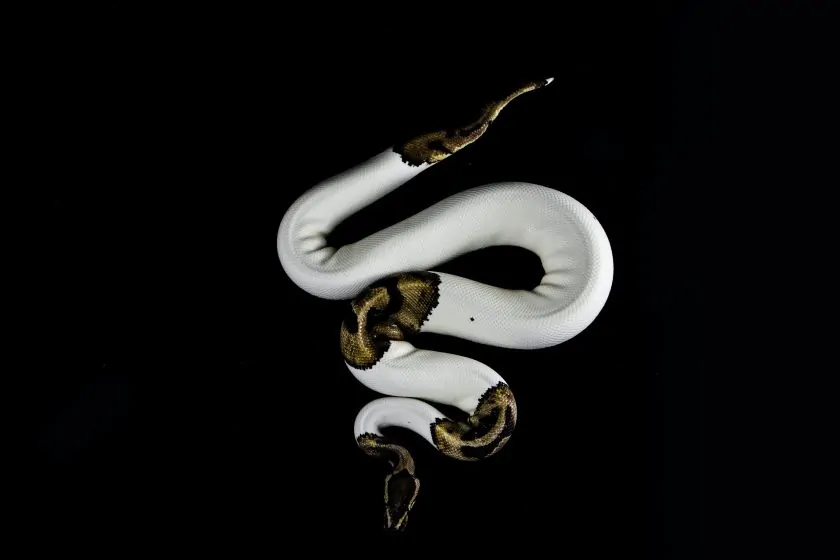
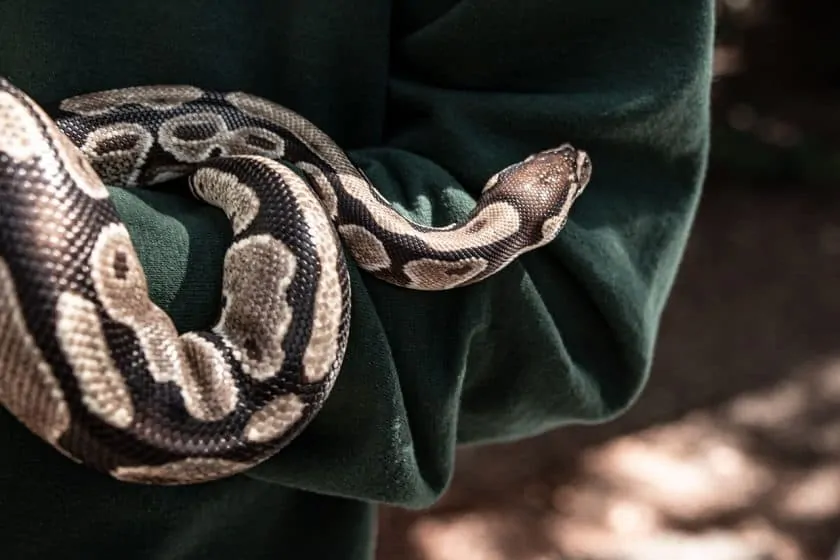

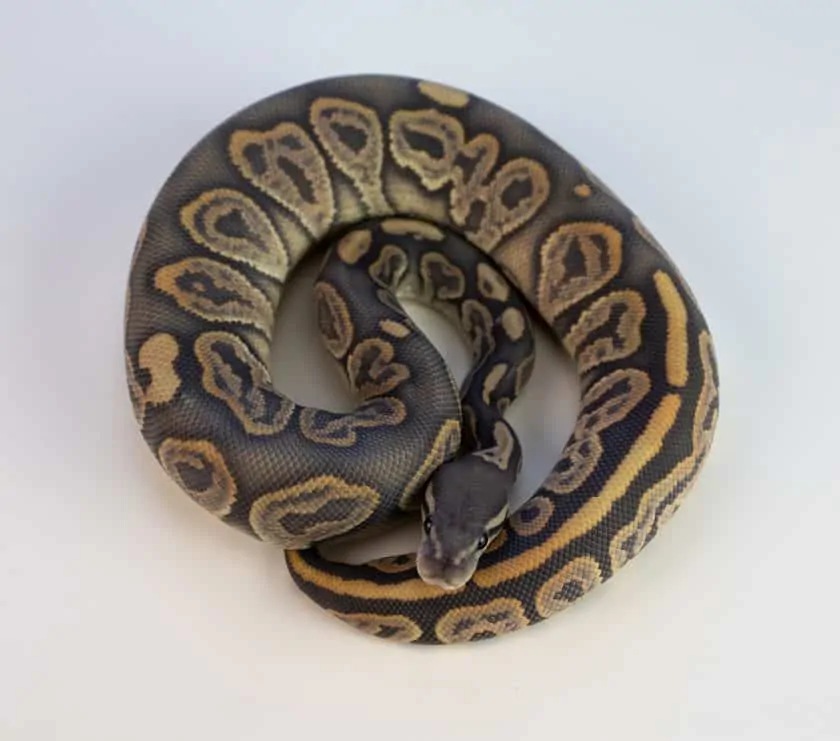
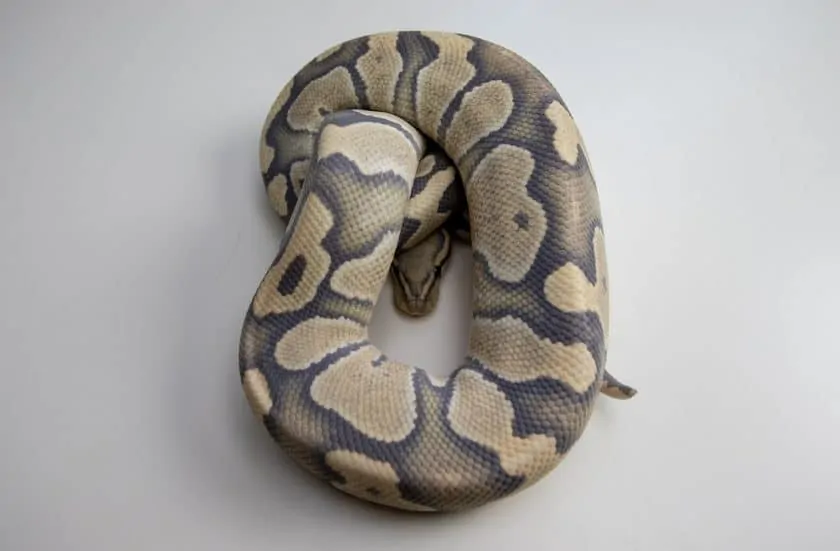
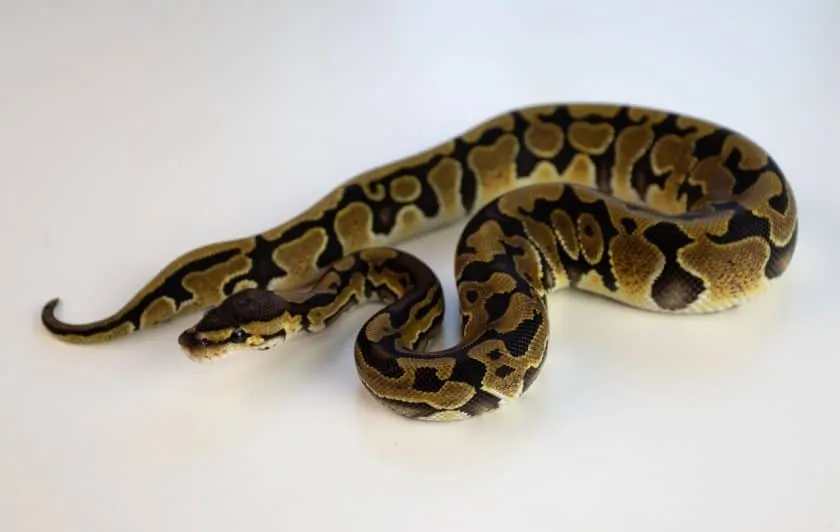
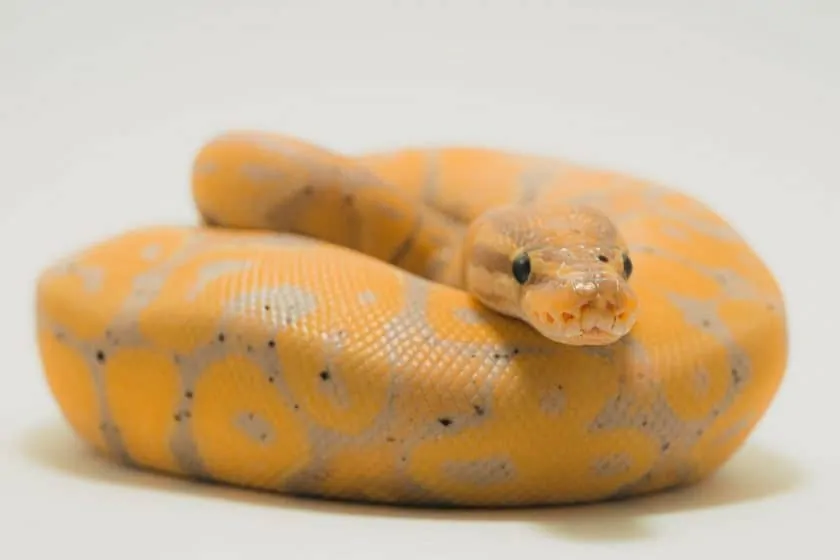
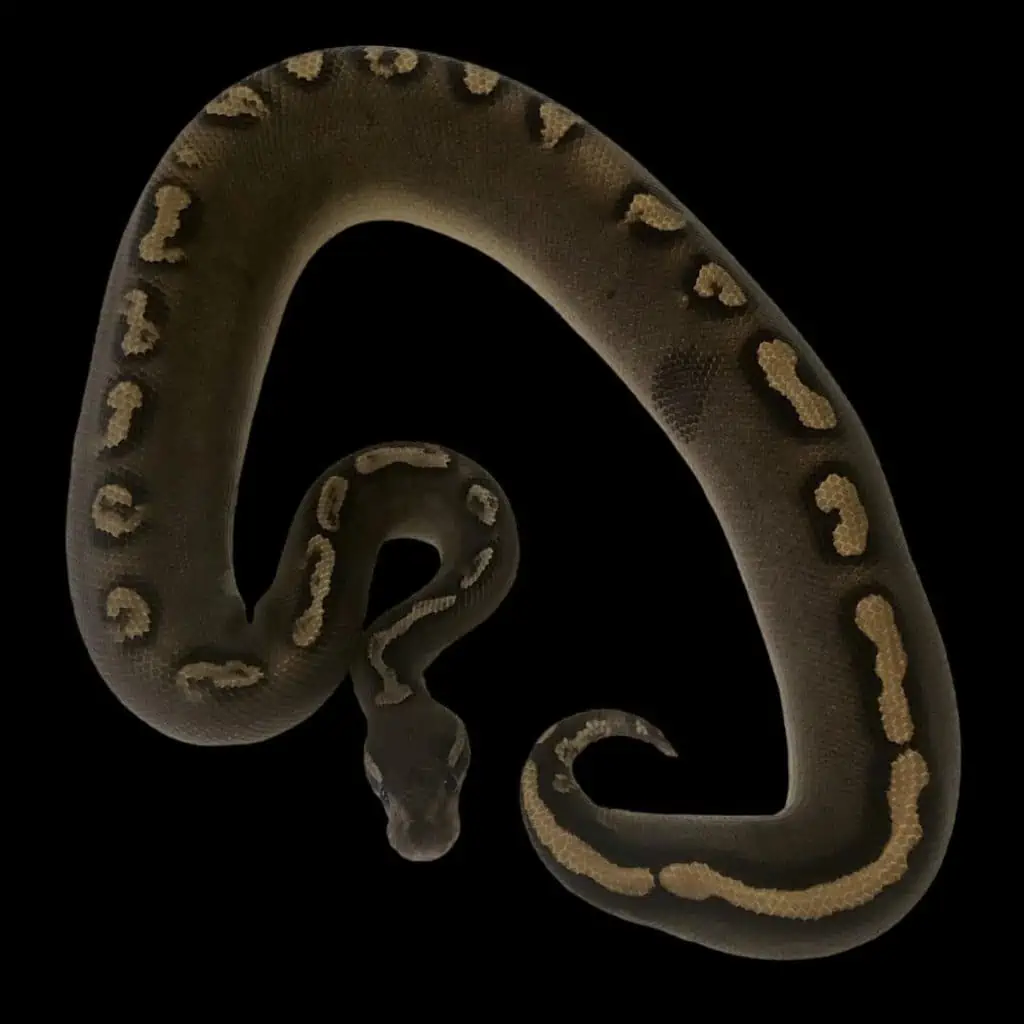
25 Comments
I am getting conflicting opinions on piebalds. To get piebald babies what do I need to breed my leopard yellow belly pied to?
Hi Deborah,
Thank you for reaching out with your question about breeding piebalds. I understand that the world of reptile genetics, especially with morphs like piebalds, can sometimes be confusing due to the variety of opinions and experiences out there.
To increase your chances of producing piebald (pied) offspring, you’ll want to breed your Leopard Yellow Belly Pied to another snake that carries the piebald gene. Since piebald is a recessive trait, breeding two carriers of the gene significantly increases the likelihood of producing piebald babies.
If you breed your Leopard Yellow Belly Pied with another pied or a het pied (heterozygous for piebald), you’ll have a chance to produce pied offspring. The presence of other genes, like the Leopard and Yellow Belly in your snake, can also influence the appearance of the offspring, creating unique combinations.
Remember, genetics can be unpredictable, and each breeding can produce a variety of outcomes. If you’re looking to produce specific morphs or patterns, it’s important to understand the genetic makeup of the snakes you’re breeding.
Best of luck with your breeding project!
How can u tell if a python is male or female?
Hey Andrew!
To figure out if a python is male or female. It’s a bit tricky since pythons don’t have super obvious signs like some other animals, but there are some neat methods experts use.
First off, there’s a technique called ‘probing’. This is where a vet or a reptile expert gently uses a special tool to check inside the python’s cloaca (that’s the opening near the tail). The tool doesn’t go very far in female pythons, just about 1 to 3 scales deep, but it goes further in males because they have different reproductive organs. It’s really important to have a professional do this because it needs to be done carefully to keep the python safe.
Another method is called ‘popping’. It’s used to look for something called hemipenes, which are the male python’s reproductive organs. They are usually hidden but can be gently exposed in males. Again, it’s super important to let a pro handle this because it’s a delicate process.
And here’s a simpler way to guess – just by looking at the python’s size and shape. Generally, male pythons are a bit smaller and lighter than females. They also have a distinct bulge near the base of their tail, right after the cloaca, which females don’t have. This is because of those hemipenes I mentioned earlier.
So, the best way to know for sure is to get help from a vet or a reptile expert. They use special methods like probing and popping, and they know how to do it safely. But, if you’re just curious and looking at a python, you might notice males are generally smaller and have a bulge near their tail.
Hope that helps! 🐍
I appreciate your article! I recently bought my first which is a male YB, specter, bamboo, and he really looks like a decent straight bamboo. What kind of snake 🐍 am I dealing with exactly and what are some good combos to match?
Hi Russell,
You have a Ball Python with a unique combination of genes! “YB” stands for Yellow Belly, while “Specter” and “Bamboo” are different morphs, all contributing to your snake’s unique color and pattern.
Importantly, Yellow Belly and Specter belong to the same allelic complex (the Super Stripe complex). This means your snake has inherited ONE of these traits, not both:
Scenario 1: Yellow Belly: Your snake displays YB characteristics.
Scenario 2: Specter: Your snake displays Specter characteristics.
Scenario 3: Super Stripe (25% chance): Your snake inherited BOTH alleles, creating the Super Stripe morph, which is visually distinct from YB or Specter alone.
The reduced pattern and intensified color likely mean your snake is either expressing Yellow Belly or Specter traits, making it visually similar to a Bamboo. It’s impossible to know for sure without test breeding.
When it comes to pairing, consider striking pattern morphs like Pastel, Mojave, or Clown. If you’re interested in enhancing the Bamboo, Yellowbelly, or Specter traits, you might need to do some test breeding to determine the exact morph your snake carries. Then you could strategically pair with another Bamboo, Yellow Belly, or a similar morph in the complex.
Remember, breeding snakes involves factors like genetic probability, health of the animals, and proper incubation. If you’re planning to breed, ensure you’re equipped to care for the potential offspring.
Best of luck!
I have a normal ball python a male he is still pretty young still eating hopper mice I’m wanting to start a small scale breeding project and I’m wondering what kind of gene or morph I could breed my normal male with to get some unique pattern/color variations different than just a normal pattern and color can any one help me decide a fairly cheap female in the 250 300 dollar range I might could find to start a little breeding project and have some unique offspring thanks alot for all the information above also looking forward to hearing any replys
Hi Jerad,
Ball pythons have a great variety of morphs, and many are within your budget. A good choice could be a Pastel, Spider, Mojave, or Lesser morph, all of which can create unique patterns and colors when bred with a normal ball python. Remember, morphs are co-dominant traits, so you can expect about half of the offspring to exhibit the morph’s characteristics.
Before you embark on a breeding project, make sure to study and understand the genetics, ethics, and responsibility involved in breeding reptiles. Also, ensure you have the necessary resources and time to care for the offspring. Check out some online resources or books on ball python breeding for a more comprehensive understanding.
Good luck with your breeding project!
I just got a ball python and she is a super lemon pastel she is so cute!
Hello I have a female pinstripe that I am pretty sure has another gene hidden in her, shes very dark, and I have looked up many combos and still cant figure it out…I can always send a pic and you can start looking into it if you want 🙂 either way I have paired her a few times this season and waiting to see if she takes to it
Thank you for your question, Ashlee! It can be difficult to determine the genotype based on its appearance, as there can be a lot of variation in phenotype (physical appearance) even within a single genotype. In addition, some ball pythons can carry hidden genes that are not immediately apparent. In general, it is best to wait until the offspring are born before attempting to determine the genotype. However, if you have any specific questions or concerns, please feel free to let us know.
If you would like to find out what morph genes she carries, other than just pinstripe, you can try one of three methods, breed her to a normal ball python,to prove her out, her offspring will show what other genes, if any, are in her, or, you can actually have her DNA tested, by way of sending in, a simple shed skin of hers, or, you can have an experienced breeder take a look at her, as a seasoned breeder can usually give you the answers, just by looking her over, as their genetic combinations are visually obvious. Good luck to you.
I just got a ball python from a friend , I think he is the Mohave variant. I enjoy taking care of him.
Congratulations on your new pet! Have fun!
I have a banana pinstripe ball python and he’s absolutely a beautiful snake but he’s been very picky lately as he wouldn’t eat a smaller mouse i got him but then i got him a medium rat and he ate it quickly.why is that?
Hi Ryan,
Rats and mice smell differently so it is likely your snake is more used to feeding on rats and prefers them. Stick with the rats if he is happy eating them.
It’s because you don’t feed ball pythons any mice, unless they’re hatchlings, and that’s when you feed them Hopper sized mice, very young baby mice, from there, you move up to rat fuzzies, then rat pups, then small rats, and then up to size medium rat, and balls require once a week feedings, unless they decide to go off food for a while, usually due to shedding or breeding time. Unfortunately, a lot of inexperienced snake owners, make the mistake of not knowing or ever even taking the time out to do the research,on feeding size, timing, or habitat preferences of the animals they purchase, and they end up starving their snakes, under or over heating their snakes, or their snakes end up on the loose, because they have zero idea as to how to house them a nd care for them. Please, don’t get ANY animal, if you’re not willing to take a few minutes or hours out of your time, to do the necessary research on the internet, as to how to properly care for that animal, and prov8de the habitat and care they require.
I love the bamboo/pinstripe combo. Pastel desert ghost is also amazing.
What would a primarily white one be called with big yellow smiley faces on it? It was just beautiful! I saw it on T.V. and it sold for $6,000.00.
Piebald
Shannon what kind of ball should I breed a Piebald to get the piebald in hatchlings
No not a piebald. I think a banana/ coral glow. Look at the photo above.
Pieds are usually not so expensive. 😉
Regards walter
Dreamsicle Ball Python,it is rare but could happen a breeder named Justin Kobylka bred them
This article was a huge help to me. After military service, I plan on going to college for herpetology so sites like this really help me get a head start on the hobby. Thank you so much(also, it is my opinion that the most beautiful ball python is the pastel freeway. However, my favorite is the pied reticulated)
Good luck, man. Thank you for your service.